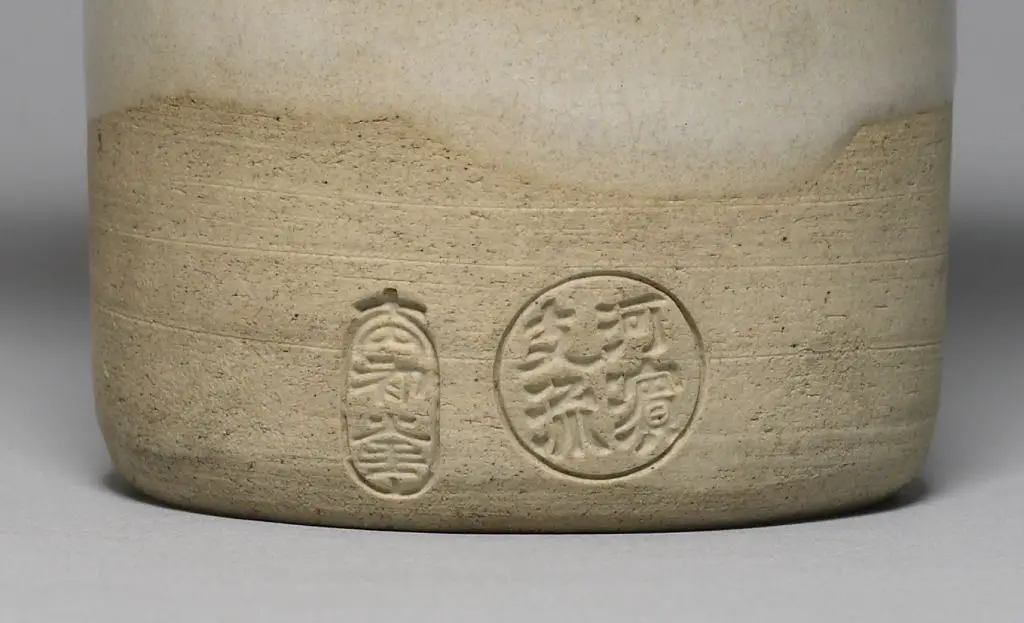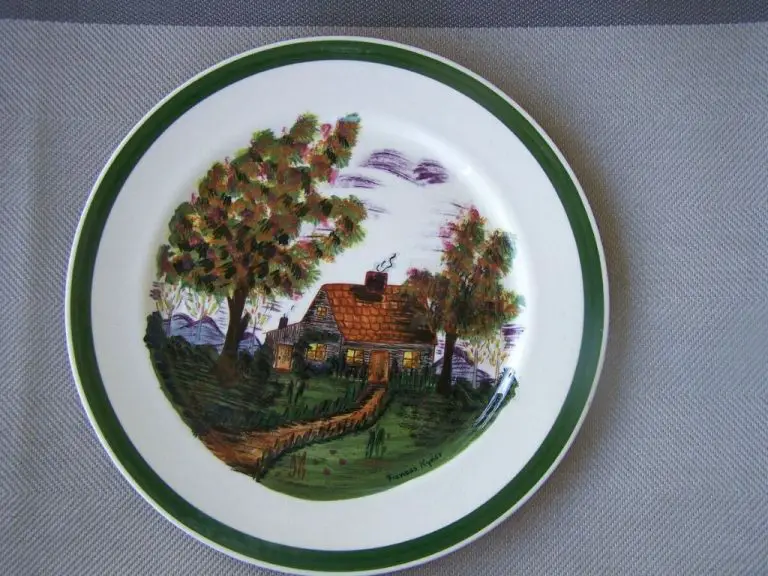How Much Does It Cost To Glaze Pottery?
Glazing is an important finishing process in pottery that provides an impervious and decorative coating to bisqueware. The glaze melts during firing and coats the clay body after it vitrifies. There are many factors that affect the cost of glazing pottery including the cost of materials, glazing techniques used, firing expenses, equipment and studio costs, number of pieces glazed, amount of labor required, the type of ware, and any special effects. This article will provide an overview of the main considerations when estimating the cost to glaze pottery. https://www.potterytothepeople.com/introduction-to-glazing
Cost of Materials
The primary materials needed for glazing pottery include glazes, underglazes, overglazes, stains, and other specialty coloring agents. The cost of these materials can vary widely based on quality, brand, quantity purchased, and specific type.
Glazes are the most essential ingredient in glazing pottery. Glaze prices range from $15-50 per gallon, with premium glazes costing up to $70 or more per gallon. Underglazes and overglazes used for additional coloring effects tend to cost $10-20 per pint. Specialty stains and coloring agents can cost $15-30 for a 2-4 ounce jar.

In total, most potters budget $30-100 for a starter set of basic glaze materials, then $10-30 per month for ongoing supply costs. Buying in bulk quantities can help reduce the per-ounce price. Expect to spend more for specialty glazes and colors like iridescents, crystals, neon, and precious metals which add visual interest but cost extra.
Glazing Techniques
There are several common techniques used to apply glaze to pottery. Each has its own advantages and costs.
Spraying glaze involves using an airbrush or spray gun to evenly coat the piece with a fine mist of glaze. This allows glaze to easily reach all surfaces and edges. Spray equipment ranges from $50 for a basic airbrush to over $500 for a high-end spray gun system, not including the cost of an exhaust booth or ventilation (Source).
Dipping entails fully submerging the pottery in a container of glaze. This ensures complete coverage, but can result in thick build up in recessed areas. Glaze buckets cost $20-50 depending on size. Pouring involves manually coating the piece with glaze from a bucket or bottle. This allows precise control but can leave uneven coverage (Source).
Brushing glaze on with a brush gives the artist a high level of control for customized effects. However, it takes more time and labor. Brushes can cost $5-20 each depending on materials and quality.
Firing Costs
Firing a kiln is one of the most expensive parts of producing finished ceramic pieces. There are two main types of firings – bisque firing and glaze firing. Bisque firing refers to the initial firing of the raw clay or greenware to convert it from its soft, wet state into a hard, porous material ready for glazing. Glaze firing is the second firing after the bisqueware has been glazed to melt the glaze and create a glass-like coating.
Bisque firing costs typically range from $8-15 per cubic foot of kiln space used. Glaze firing tends to be slightly more expensive at $10-20 per cubic foot. The range depends on factors like the kiln size, number of shelves used, and local market rates. Small hobby kilns used by individual potters may charge $15-25 for a full firing, while large production kilns spread the costs over hundreds of pieces getting fired at once. According to Ceramics Monthly’s 2021 firing survey, the average U.S. price for cone 6 electric bisque firing is $12 per cubic foot and $16 for cone 6 electric glaze firing.
Glaze firings require more time, a slower ramp up to top temperature, and extra care to avoid glaze defects. The higher temperatures also use more electricity. Factoring in kiln maintenance, specialized skills, insurance and other overhead, commercial studios and schools often charge 1.5-2x the base energy costs. For example, a small 6 cubic foot top loader kiln might use $6 of electricity per firing but charge $15-20 total with fees. Larger more efficient kilns can get the fees down to around 1.25x the energy use. Firing costs ultimately depend on the specific studio rates and kiln operation expenses in your area. Check with local pottery studios to compare rates and policies for outside pieces.
Studio/Equipment Costs
One of the biggest expenses for potters is the cost of the studio space and equipment needed. At minimum, a basic studio setup requires adequate space, a wheel, kiln, tools, and storage solutions for works in progress. Here’s a breakdown of typical costs:
Studio Space: If working from home, budget at least 200-300 sq ft for a dedicated pottery workspace. Rental studios can range from $100-500 per month depending on location and amenities. Building a backyard studio can cost $15,000-$30,000.
Kilns: Expect to spend $2000-$5000 on an electric kiln large enough for production scale work. Additional costs may include ventilation, kiln furniture, and testing cones.
Pottery Wheel: New wheels cost $600-$2000. Used wheels can sometimes be found for $200-$800.
Tools: Basic tools like bats, trimmings, cutting wires, etc can add up to $500 or more. Budget more as your toolkit expands.
Storage: Shelving, racks, bins and other storage essentials can cost a few hundred dollars or more.
Ongoing costs for clay materials, glazes, electricity and kiln maintenance should also be factored in.
Overall, establishing a well-equipped pottery studio space can require an initial investment of $5000-$50,000 depending on scale and amenities. This significant startup cost should be planned for when budgeting to run a professional ceramics practice.
Number of Pieces
The cost per piece can be significantly affected by the quantity being glazed and fired. Firing kilns uses a lot of energy, so there are economies of scale when firing larger numbers of pieces. Many studios offer discounted rates when glazing and firing larger volumes.
For example, according to Clayworks Studio, their price per piece drops from $5 for bisque firing 1-5 pieces, down to $2.50 per piece when firing 100+ pieces in the same load. Glaze firing prices follow a similar bulk discount structure.
For hobbyist potters only producing a few pieces at a time, the per piece cost will be higher. But those operating at production scale can reduce costs significantly through volume discounts on glazing and firing services.
Labor Costs
Glazing pottery by hand is a time-intensive process that requires skill and attention to detail. Professional ceramic artists or studio technicians will charge an hourly rate for their labor. According to community.ceramicartsdaily.org, experienced ceramic artists may charge $25-50 per hour for glazing work.
The amount of time required per piece can vary greatly depending on the size and complexity of the form. A simple glaze on a small mug or bowl may take 5-10 minutes. But applying multiple layers of glaze with detailed effects on a large vase could take over an hour. Most ceramic pieces will average 15-30 minutes of hands-on glazing time per piece. This labor cost quickly adds up for artists, especially when glazing large volumes of work.
To determine the total labor costs, multiply the artist’s hourly rate by the estimated time per piece, then by the number of pieces being glazed. For example, if an artist charges $40/hour and takes 20 minutes (.33 hrs) to glaze each piece, glazing 50 mugs would incur $660 in labor fees alone.
Type of Ware
The three main types of clay bodies used in pottery are porcelain, stoneware and earthenware. The type of clay can significantly impact the cost of glazing.
Porcelain is generally the most expensive to glaze because it requires very high firing temperatures between 2200°F and 2400°F. Glazes also tend to craze more on porcelain, so multiple firings may be needed to achieve the right results. According to ceramic artist Jenny Collier, glaze materials for porcelain can cost $15-25 per firing.
Stoneware is moderately priced for glazing. It fires at lower temperatures between 1900°F and 2300°F. Standard stoneware glazes contain ingredients like feldspar, silica and kaolin that cost $2-5 per firing according to Ceramic Arts Network.
Earthenware is generally the most affordable clay body to glaze. It fires at the lowest temperatures, between 1600°F and 2000°F. Since it requires fewer fluxing agents and lower firing temps, earthenware glazes can cost as little as $1-3 per firing.
In summary, porcelain glazing runs the highest at $15-25 per firing, followed by stoneware at $2-5 and finally earthenware at just $1-3. The type of clay determines the materials, temperatures and complexity required for glazing.
Special Effects
Certain glazing techniques can create special visual effects that add more value and uniqueness to finished pottery pieces. However, these special effect glazes often require additional materials, skill, and firing considerations that increase costs. Some popular special effect glazing techniques include:
Crackle glazes – These glazes develop fine crackle lines during firing, creating an antique look. They require specific clay bodies and multiple firings, adding labor and kiln costs. Special cracking agents like wax resin or zinc oxide may be added to the glaze. According to this source, special effect glazing can add complexity and cost for ceramics manufacturers.
Metallic glazes – Real metals like gold, silver, copper, or platinum are added to molten glaze for a shimmering metallic effect. The metals increase material costs significantly. Metallic oxides may also be used but yield a less brilliant effect. Proper application and firing is required to achieve the metallic look.
Ombré glazes – These glazes fade from one color to another during firing for a gradient effect. Multiple glaze layers must be meticulously applied, increasing labor time. Ombré glazing requires excellent skill and control over firing effects.
Overall, special effect glazes require specialized materials, application techniques, and firings that can add $5-$20 per piece for hobbyists. For professional studios, the extra labor and material costs may add 10-30% to the normal glazing price per piece. However, the visual impact can greatly increase the retail value and appeal of finished ceramic pieces.
Conclusion
In conclusion, the main factors that influence the cost of glazing pottery per piece include the cost of materials like glazes, stains, and underglazes, the firing and kiln costs, the number of pieces being glazed, any special application techniques or effects, and the labor involved. Glazing materials can range from $0.25-0.65 per kg on average, with more specialized glazes costing more. Firing pieces in an electric kiln costs around $0.10-0.25 per piece for electricity. Factoring in all costs, most pottery studios charge $3-12 per piece on average for glaze application and firing, with more complex techniques, special effects, and lower volume increasing the per piece cost. By understanding the key factors involved, potters can estimate their costs and price their pieces fairly.

